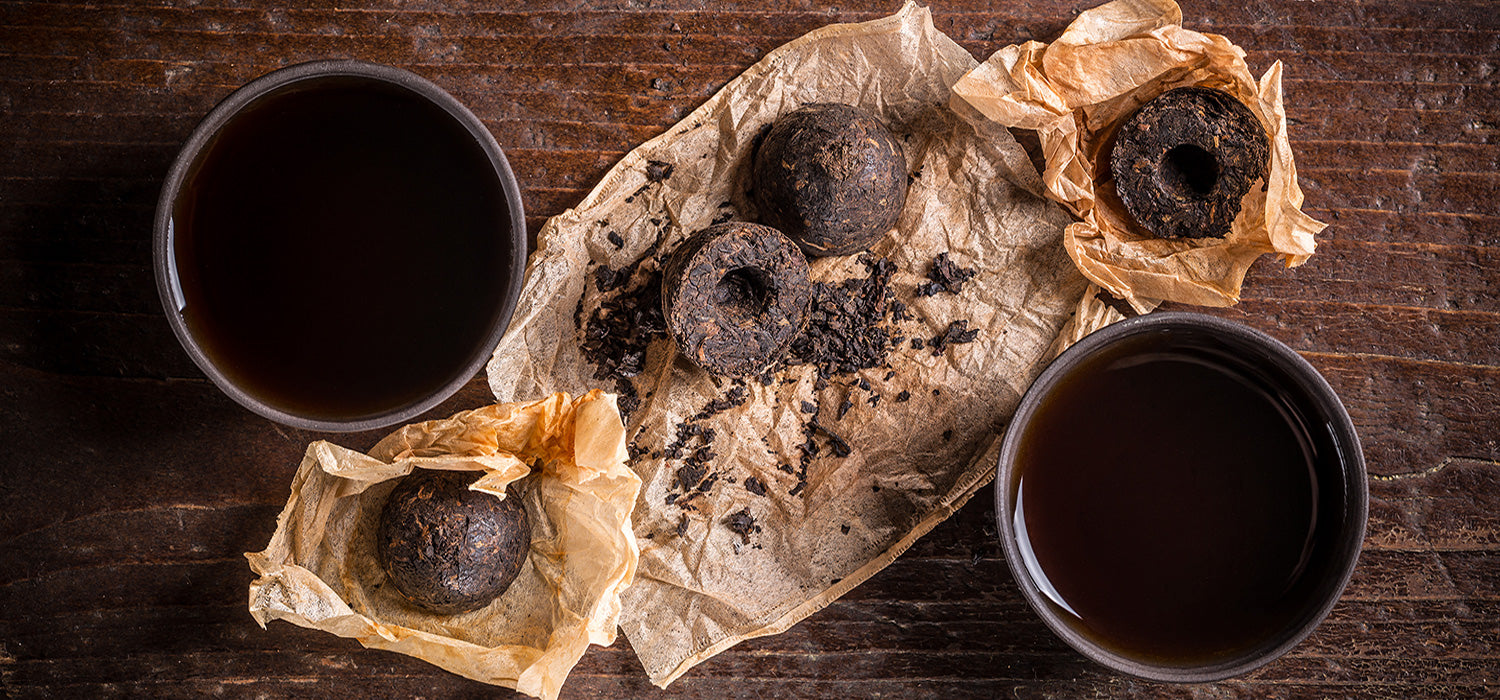About Pu-erh Tea

Pu-erh tea is made from the broad leaf variety (camellia sinensis var. assamica) of the tea plant camellia sinensis from the Southwest region of Yunnan China, believed to be the birthplace of tea. Over 2000 years ago, the people of the area began cultivating "tea gardens," open areas, mostly in the high mountains, where tea trees are grown, coexisting with the native plants and ecology. Today these tea gardens continue to be tended and harvested by the aborigines of this region. Not only are we privileged to be able to consume tea from these ancient tea trees, the traditional packaging and processing of the tea have remained essentially unchanged to this date, earning Pu-erh tea the reputation of being the "King of Teas" or the "Historical Tea."
While most teas, by and large, are best consumed soon after production to retain both their flavor and antioxidant value, Puerh can be aged and refined like wine. It undergoes a fermentation process where microbes act on the tea leaves over time, causing the leaves to darken and the flavor to change, becoming smoother. Depending on the conditions and environment of aging, the taste can transform through various stages of being fruity, nutty, grassy, herbal and earthy.
There are two types of tea we in the West commonly know as Puerh. Raw Puerh (Sheng tea) and Ripe Puerh (Shu tea). The difference is in the aging process. Raw Puerhs are typically fermented very slowly by being stored in cellars and aged for up to 25 years. These teas, typically priced well out of range of the average tea lover, usually reside in the collections of exceptionally wealthy Chinese tea aficionados – their presence on the international markets is incredibly rare. Raw Puerh vintages are characterized by warm tones of earth, damp moss and oak that shift and shape during the aging process.
Both types of Puerh Tea (Raw and Cooked) are made with Sai qing “sun-cured green tea,” which is processed by withering, roasting, rolling, kneading and drying the leaves in the sun.This is how Raw Puerh is made: After it is processed as Sai Qing, the tea leaves can either be left loose or compressed into shapes. At this point the tea may either be consumed in this “raw” green/semi-green form, or properly stored for aging, (which means the tea will be subject to further oxidation and to natural fermentation).This is how Cooked (or “ripened”) Puerh Tea is made: It is subjected to a transformation through natural fermentation. After the tea leaves have been processed as Sai qing, they are intentionally fermented in piles by adding purified water and mixing the tea leaves in a well-ventilated, climate and temperature controlled room. This process is similar to composting.Once the desired fermentation is complete, the tea is sorted, graded, and then processed as either loose pu-erh or it can be compressed into shapes (like tea bricks or tea cakes).